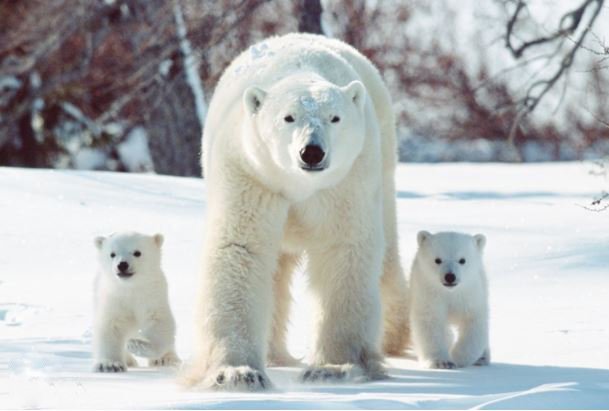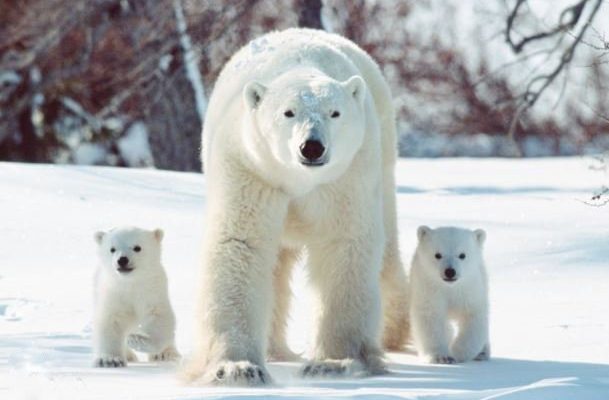
You might be wondering how exactly they manage this. Well, just like how humans have learned to build insulated homes and wear warm clothing to handle winter, polar bears have evolved specific traits and behaviors that keep them warm and well-fed in their icy habitat. Let’s dive deeper into the fascinating ways polar bears adapt to their environment, ensuring their survival in an ever-changing world.
Insulating Fur and Fat Layers
One of the first things you’ll notice about polar bears is their stunning white fur. But did you know that this fur serves more than just looks? Underneath that fluffy exterior, polar bears have an impressive layer of blubber, which can be up to 4 inches thick! This blubber acts like a natural thermal blanket, keeping their body heat from escaping. It’s like having your very own built-in insulation system.
Moreover, polar bear fur is not just for show. Each strand is hollow, which helps trap warm air close to their skin. This unique feature provides an extra layer of insulation, making it easier for them to stay warm even in frigid temperatures. Although they can look cuddly, remember that these bears are well-equipped to handle Arctic chills!
Color and Camouflage
The coloration of polar bears also aids in their survival. Their fur appears white, blending in seamlessly with the snowy landscape, which is vital for hunting. When they stalk seals, their primary food source, this camouflage allows them to sneak up without being detected. It’s like a living game of hide-and-seek in the snow!
Interestingly, polar bears’ skin underneath their fur is black. This dark pigment helps absorb sunlight, further assisting in keeping their body temperature stable. So, they have a double advantage—looking inconspicuous while soaking up warmth from the sun. It’s a clever adaptation that demonstrates nature’s genius!
Behavioral Adaptations
Apart from their physical traits, polar bears have developed several behaviors that enhance their survival. For instance, they are excellent swimmers. With large, powerful limbs, they can paddle through icy waters with ease, covering distances of over 30 miles in a single swim. This ability allows them to hunt for seals that are resting on sea ice—essential for their diet.
You might be surprised to learn that polar bears can also go without food for a while. They often enter a state called walking hibernation, where their metabolism slows down during especially harsh winters when food is scarce. This allows them to conserve energy until the ice melts, and hunting becomes easier again. It’s a smart strategy to ride out the tough months!
Creating a Den
When it comes to giving birth, polar bears also have a unique approach. Female polar bears dig dens in the snow to keep themselves and their cubs safe during the harsh winter months. These dens offer protection from the bitter cold and predators. Once inside, they stay cozy and protected until the cubs are ready to emerge in the spring. This denning behavior is crucial for the survival of their young, providing them with the best possible start in life.
Hunting Techniques
So, how do polar bears get their food in such a challenging environment? Hunting techniques play a big part in their survival. Generally, they rely on sea ice to catch seals. One common method is called still-hunting, where they wait by a seal’s breathing hole in the ice, patiently waiting for their meal to surface. It requires a lot of patience and skill, but it often pays off!
Another hunting technique is known as sudden attack. When seals are resting on the ice, a polar bear can sprint toward them at surprisingly quick speeds. However, they can only maintain this speed for short distances, making camouflage a vital factor in their success. Maintaining their energy while hunting is a balancing act!
Adapting to Climate Change
Unfortunately, climate change is a significant challenge for polar bears right now. As the Earth warms, sea ice is melting at an alarming rate. It’s a bit like your refrigerator breaking down in the middle of summer—things start to spoil quickly. Polar bears depend on sea ice as a hunting ground, and the loss of ice means it’s harder for them to catch seals.
To cope with this change, polar bears might be forced to swim longer distances or seek alternative food sources. They have shown some adaptability, but the rapid pace of climate change poses a massive threat to their existence. This situation emphasizes the need to take action to protect their habitats and ensure their survival for future generations.
Social Structure and Communication
Polar bears are generally solitary animals, but they do communicate with one another. They rely on various vocalizations, scents, and body language to convey information, especially when it comes to mating or raising cubs. For example, a mother polar bear will often let out soft grunting sounds to reassure her cubs.
Interestingly, during the summer months, when food is more plentiful, you might spot polar bears gathering in larger numbers around ice floes or coastal areas. This temporary social behavior allows them to share information about food sources or even just enjoy each other’s company. It’s a reminder that even in the wild, animals can form connections!
In a world that often feels chaotic and uncertain, polar bears serve as a powerful reminder of resilience. Their survival strategies, from their thick insulation to clever hunting techniques, are awe-inspiring. We can learn a lot from how they adapt to their harsh environment.
As we witness changes in their habitat, it’s essential to reflect on the impact of our actions on wildlife. By understanding polar bears and the challenges they face, we can help advocate for climate solutions that protect their future. So next time you think of polar bears, remember that they are not just adorable creatures; they are symbols of endurance, strength, and the delicate balance of nature. Let’s work together to ensure they continue to thrive in the Arctic, their true frozen paradise.

